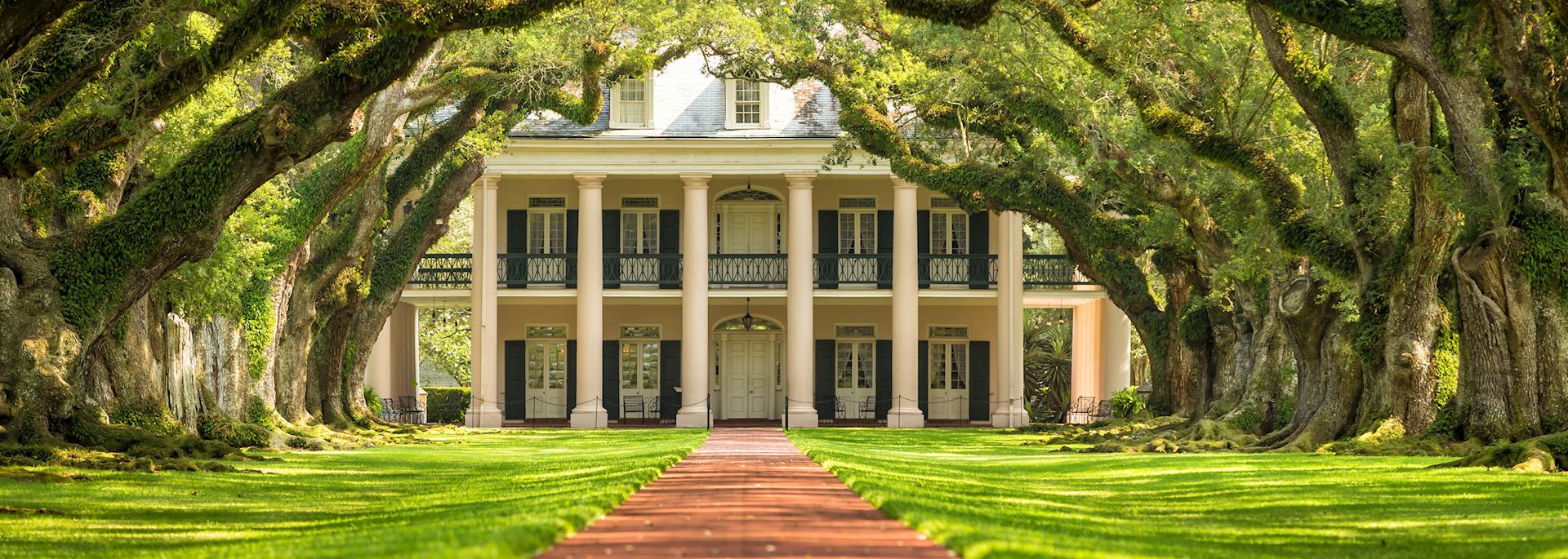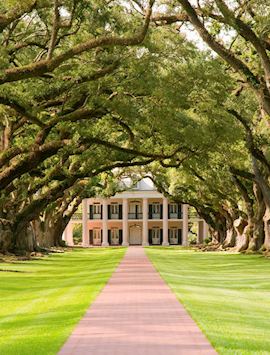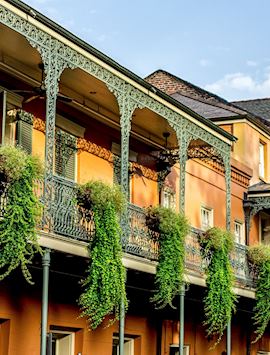By USA specialist Natalie
Much of the South is defined by the cities and plantations that are strung out, like Mardi Gras beads, along the length of the mighty, muddy Mississippi. Along the river, you’ll find smoky jazz halls, authentic blues dives and country music honky-tonks. You’ll also encounter restored plantations whose graceful white columns and tree-lined drives disguise a horrific history. This is the land of jambalaya, civil rights, Elvis and the Grand Ole Opry.
A two-week self-drive tour through Louisiana, Mississippi and Tennessee can take you through the heart of the American South, following the river that defines the region.
Let the good times roll in New Orleans, Louisiana

A cultural stew pot, New Orleans has long held firm to its open-minded acceptance of anyone who鈥檚 willing to let the good times roll. French Catholic, Caribbean and African influences set the tone, alongside recent Vietnamese and Sicilian ones, all melding together in a sassafras-scented cultural gumbo.
For many, the city is the birthplace of jazz. You hear it spilling from bars on Frenchmen Street, at the prestigious Jazz Fest, blasted by buskers in Jackson Square, and leading spontaneous parades through the French Quarter. Even if you鈥檙e not a fan, I strongly suggest taking in a performance by the Preservation Hall Jazz Band.
Performed four or five times a night, the short show consists of an improvised set list. The virtuosic band members solicit requests from the audience, mixing in a little vaudevillian patter and good-natured ribbing. I think that the tiny venue and intimate nature of the performance make it the best way to experience jazz in the city.
Aside from its music, New Orleans is probably best known for its cuisine, and you could easily frame your whole visit around eating. Try pralines at Aunt Sally鈥檚, gumbo at Galatoire鈥檚, jambalaya at Coop鈥檚 Place, milk punch at the Court of Two Sisters and beignets at Caf茅 du Monde (bring cash).
For a more hands-on approach, you can whip up some of these poetically named dishes in a class at the New Orleans School of Cooking under the wing of an expert chef.

The city also continues to be a hotbed of culinary innovation. Staying au courant of the ever-changing restaurant scene is practically a full-time job, so ask your hotel concierge for recommendations.
Food and music don’t account for all New Orleans’ cultural heritage — the city’s long, turbulent past is written into its streets and stones. I think the best way to explore this history is on a guided tour of the city’s graveyards.
For centuries, born out of necessity by the city’s high water table, New Orleans’ dead have been buried in above-ground mausoleums and time-blackened crypts that moulder, slowly, in the humid air.
Enclosed by crumbling brick walls and wrought-iron gates, the historical cemeteries are only open to visitors with an approved guide. But, to be honest, you wouldn’t want to go without one. The weathered gravestones and spall-faced crypts hide stories that a guide can bring to life, from deadly yellow fever plagues to dramatic family feuds.
The living are still very present here. Modern practitioners regularly leave offerings of gris-gris charms and flowers at the tomb of voodoo priestess Marie Laveau. In 1995, author Anne Rice staged her own mock funeral at Lafayette Cemetery No. 1. And, in 2009, actor Nicolas Cage commissioned a large white pyramid in Saint Louis Cemetery No. 1, for reasons he keeps to himself.
The city’s many museums include the well-curated National WWII Museum, which presents an in-depth look at the war, as well as a soda shop that recreates the ambiance of the era. Across town, in the elegant Presbytère building, the Louisiana State Museum displays a heartbreaking, but ultimately hopeful, exhibition about Hurricane Katrina. Smaller museums are dedicated to voodoo, and the history of pharmacies and costumes, among other subjects.
The American South’s Plantation Country
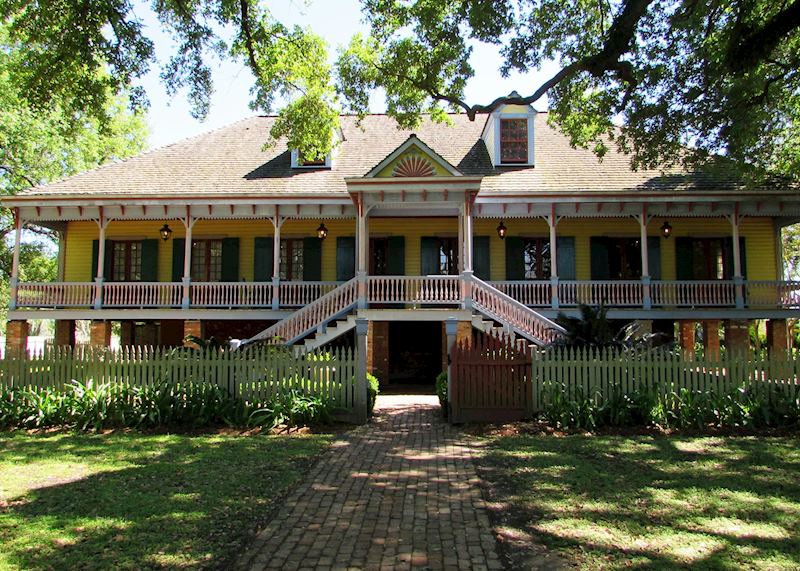
As you follow the Mississippi out of New Orleans, you see dozens of restored plantations littering the river’s wide, fertile banks. On a bend about an hour west of the city are three that I particularly recommend you visit.
Oak Alley’s front lane is lined with wide-branched oaks that frame the white colonnaded portico. The scene has been photographed so often that the image is practically synonymous with Louisiana plantations.
Lovingly, lavishly restored inside and out, the big house is, for me, the best place to spend the night in plantation country.
The tour here is fairly unremarkable, but the guest cottages are exceptional — airy and spacious with roofed porches and river views. Wake up early to explore the manicured grounds and take photographs uncluttered by hordes of tourists.
Just 10 minutes away from Oak Alley, Laura Plantation offers a thoughtful look into the history and culture of Creole plantation owners. The main house has been meticulously restored to its original blue-and-yellow exterior. Inside, you can hear about the complicated, cosmopolitan Creole culture, along with a blunt examination of how that intersected with race and the institution of slavery.
For an in-depth analysis of the lives of enslaved people, you need to venture another 10 minutes down the road to Whitney Plantation. This is the only museum in America that focuses primarily on the African workers who were forced into slavery and their descendants, born into bondage.
The exhibits provide an unflinching look at the grievous human cost that paid for the gracious mansions still lining the river, a history that’s mostly left unexamined or even elided in the other plantations.
Blues and history in Mississippi
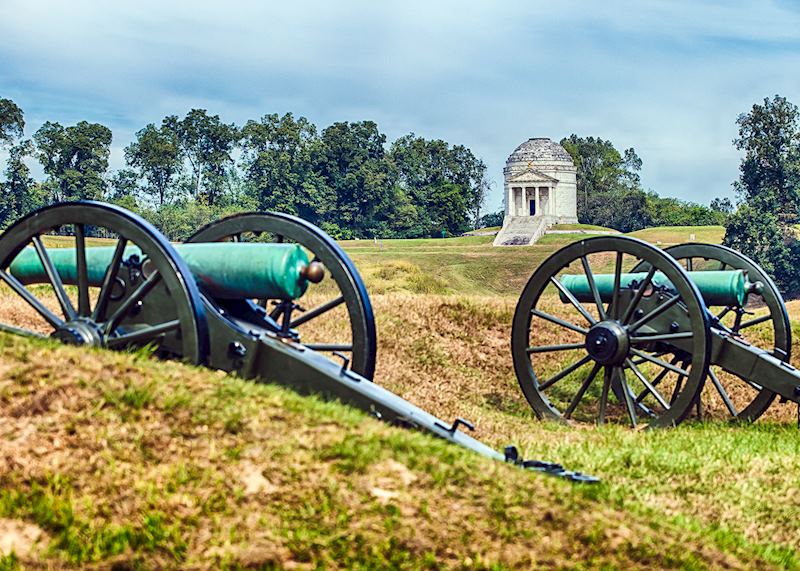
Continuing north up the river, Vicksburg, Mississippi, is a sleepy city that acted as a vital strategic point between Memphis and New Orleans during the Civil War. Because the city offered control of the river, General Grant’s army laid siege to the city for several months, shelling it from gunboats on the river.
The Vicksburg National Military Park includes a self-guided driving trail that follows the siege lines of both armies, passing tombs and monuments. Costumed re-enactors often run demonstrations or workshops along the way. The 26-km (16-mile) route also stops at the USS Cairo Gunboat and Museum, a well-preserved example of the ironclad gunboats that plied the river during the war.
If you prefer music to history, the rundown city of Clarksdale, Mississippi, is the home of the Delta blues and some of the best blues bars in the world.
Ground Zero, co-owned by Morgan Freeman, doesn’t look like much. The white paint is mostly peeled off the battered, graffiti-scrawled brick walls, and the cluttered interior is lit by strings of bare-bulb Christmas lights. But, the small wooden stage is where aspiring blues artists come to make a name for themselves.
The club is right next door to the Delta Blues Museum and centrally located on the Blues Trail, a self-drive tour of the sites vital to Delta blues, from cotton fields to churches.
‘I’m going to Graceland, Memphis, Tennessee’
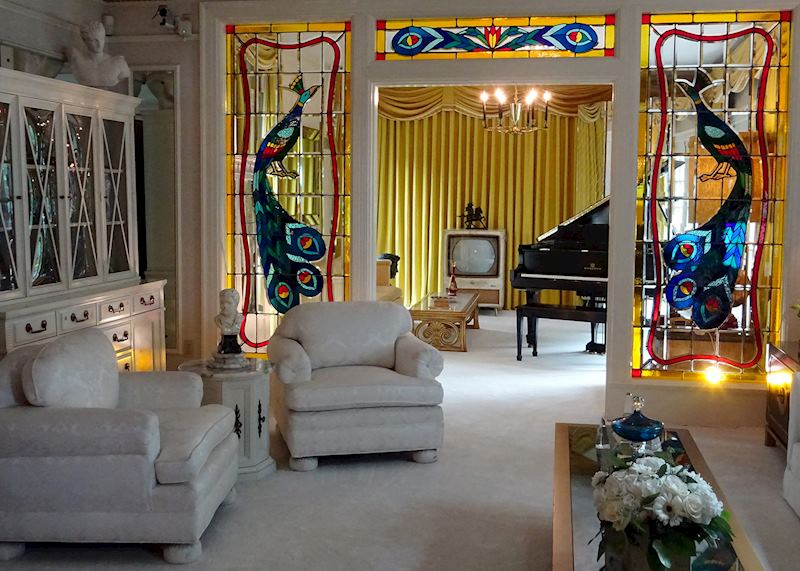

Home to Sun Studio, Graceland and a myriad of clubs that line Beale Street, Memphis is a place of pilgrimage for music fans of all sorts, whether you listen to rock ‘n’ roll, jazz or the blues.
Even if you don’t love Elvis, I’d urge you to spend at least half a day at Graceland (though true fans probably want to allot even more time). With a green shag-carpeted ceiling and the peacock stained-glass windows, the over-the-top pleasure palace is decorated in 1970s glamour or glitzy kitsch, depending on your personal taste.
Of the choice of tours, I suggest spending the extra money to see the two planes, if only for the gold-plated basin in the bathroom of the Lisa Marie. You’ll also see Elvis’s complete collection of records, cars, clothes and toys, as well as a multimedia entertainment complex that examines his life and career.
The first time I visited the mansion, I was shocked at the number of people sobbing openly at his flower-bedecked grave, the last stop on the tour.
A shuttle runs from Graceland to Sun Studio, and a visit is definitely worth your time. Elvis, BB King, Johnny Cash and countless others recorded here.
Nearby, you’ll find Beale Street, which is crowded with clubs where blues, jazz and rock musicians still belt out gigs every night and twice on Saturdays.
A 20-minute walk from Beale, the National Civil Rights Museum examines America’s long struggle with race. It backs onto the hotel where Dr King was assassinated, and you can visit the room where he died, preserved as it was that night. It’s a moving, difficult visit, but necessary, I think, to understand the South’s past and present struggles.
Two Beale Street musicians also run a vintage car tour of the city. You climb into a restored 1950s car for a tour that’s tailored to your interests. You can make it all about Elvis, examine the city’s fraught racial history or visit stops on the Blues Trail.
Music City — Nashville, Tennessee
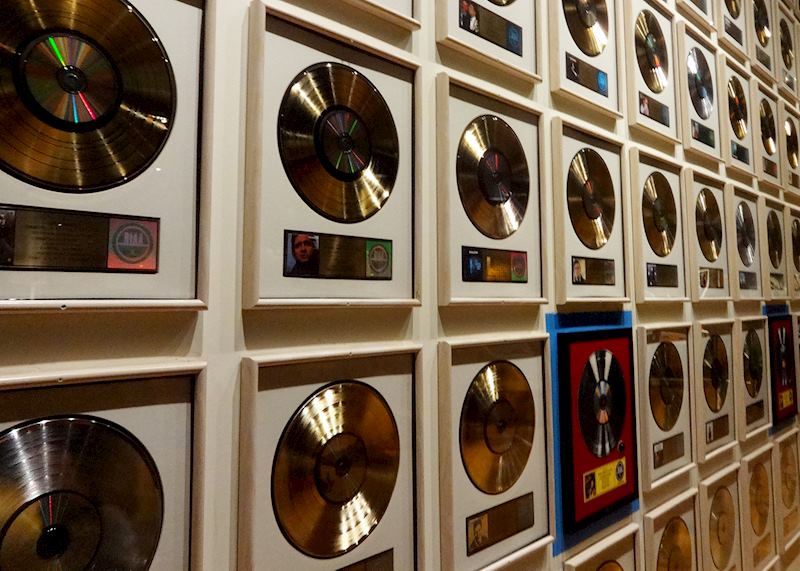
The home of country music, Nashville has a bit of a touristy vibe and, sometimes, it can be hard to get away from the bright lights and flashy façade.
But, no one knows the city as well as the musicians who flock here, hoping for their big break, and that’s why I suggest a private tour of Nashville with a songwriter.
You’ll visit the big sights and get an insider’s view of the industry as well as the history, from its earliest days in the 1920s until today. End with a drink at one of the historic honky-tonk bars that line the Broadway District.
It was on this tour that I discovered the Musicians Hall of Fame. Lesser known than the bigger, slicker Country Music Hall of Fame, this museum takes a deep dive into the whole of America’s music industry, paying tribute to anonymous session musicians as well as big-name stars. The most fascinating exhibit for me examined what goes into making a Grammy-worthy song, from the original idea, scratched on paper, to the final pressing of the album.
But, this was surpassed by seeing a performance at the Grand Ole Opry. I’m not a country music fan, but there’s something charming about the old-fashioned, thrice-weekly live-broadcast shows. Last time I visited, I took a behind-the-scenes tour of the show. Escorted by a tiny woman dwarfed by her perfectly styled hair, I visited the backstage area.
Each dressing room is decorated to a theme. ‘Stars and Stripes’ features an oversized American flag painted on the wall, and ‘It Takes Two’ is bedecked with photographs of the genre’s best-known duos.
The pinnacle of the tour is the chance to sit on stage during the performance, close to the musicians. Singer-songwriter Dierks Bentley was close enough that I could see him sweat under the bright lights of Nashville’s most storied venue.
Read more about trips to Louisiana, Mississippi and Tennessee in the USA
Start thinking about your experience. These itineraries are simply suggestions for how you could enjoy some of the same experiences as our specialists. They're just for inspiration, because your trip will be created around your particular tastes.
View All Tours in The American South